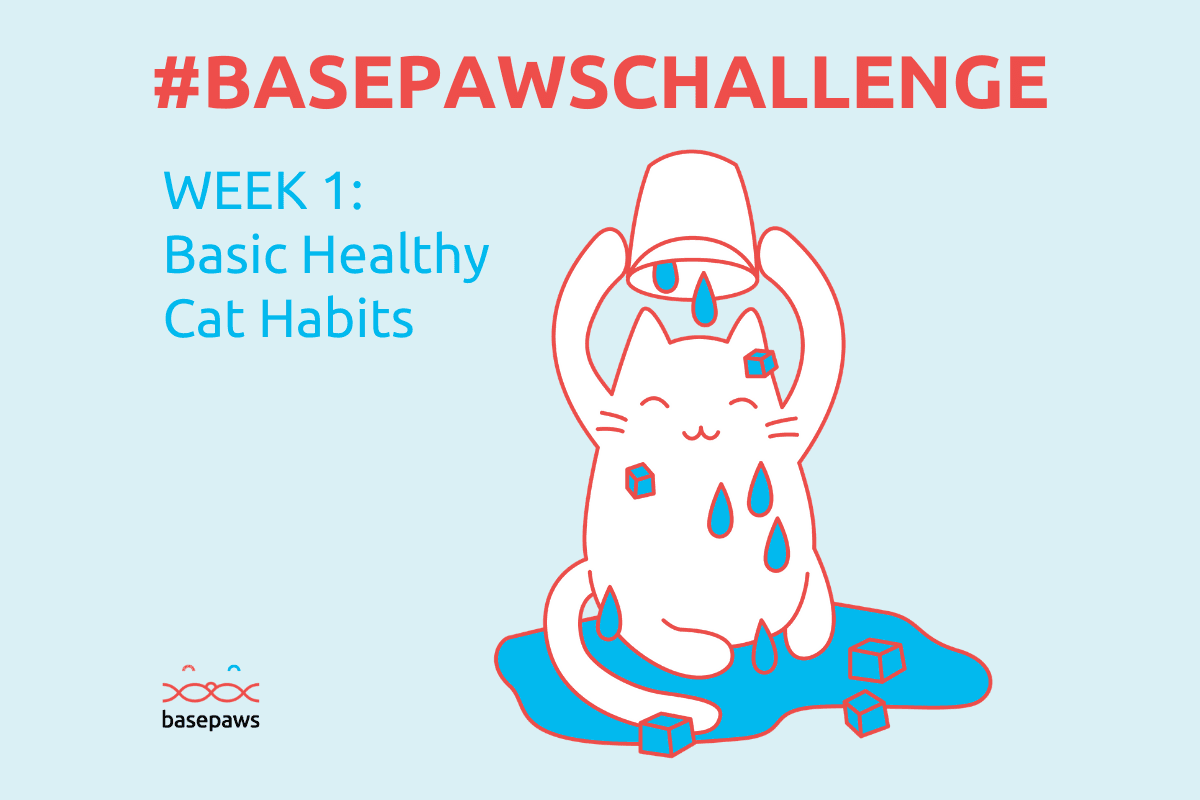This week we will be learning good habits to help track the overall health of our cats and how to keep your cat healthy. By learning what is normal for your cat you will be able to identify when something is abnormal.Recognizing deviations from normal behaviors will help you to catch any health concerns more quickly and get them treated before bigger problems arise.
First, we are going to be getting familiar with your cat’s drinking habits.
Did you know cats don't feel thirst the way we do? Pay attention to your cat's drinking habits and see if you can average their number of visits to the water bowl every day this week. Do they drink a small amount frequently throughout the day, or for larger amounts only a few times a day? How long does your cat tend to spend at the bowl or fountain when drinking? Get a sense of their water intake habits to learn what is normal for your cat. Why is this important? Increased thirst can be an indication of underlying conditions and should be addressed by a veterinary professional as soon as possible!
Next, on to coat check! Coat health is another indicatOR of your cat’s health.
Check for mats, dandruff, and other skin abnormalities. Also check the skin for any lumps or bumps on a regular basis. Dull coats or dandruff could be an indication your cat is not feeling well, is experiencing stress, or other health factors, and should be checked by a veterinarian. Mats or dirty coats may be the result of decreased grooming behaviors. Some cats may not grooming as often if they are experiencing pain or decreased range of motion. Overall, cat coats should be clean, mat-free, and have a healthy shine. Additional grooming may be needed for all cats from time to time, but pay special attention to cats with longer coats and older cats. Show us those beautiful shiny coats!
While getting in the habit of tracking your cat’s health, go ahead and start to journal.
By noting drinking habits, coat observations, and the other items we'll check, journaling can help you to track patterns in your cat’s behavior and health. Use this period of time to note your cats active times, sleepy times, where they sleep, when they eat, and any other habits they have. Once you know your cat’s habits you can use them to your advantage. For example, maximize playtimes to take a break from work and play with your cat. This is a great way to relax and unwind for you and great for your cat!
Vaccines are an important part of keeping petS happy and healthy for a long-time to come!
Make sure your cat is up to date on vaccines and know when they expire. If you are concerned about over-vaccination, consider discussing titers with your veterinarian. Titers can help to determine the level of protection the body still has from previous vaccines before giving unnecessary boosters.
Last but not least, preventatives.
Fleas, ticks, and heartworms are associated with serious diseases and even death in cats. The use of preventatives is essential to ensure cats are protected against these dangerous disease causing vectors. Most preventatives are given every 30 days but be sure to read manufacturer instructions carefully and administer only according to manufacturer labeled instructions or as instructed by your cat’s veterinarian. It is recommended to give year-round prevention throughout the country as we are seeing global climate change and an increasing presence of vectors year-round.
Join our Basepaws Weekly Challenge and keep your cat healthy!



